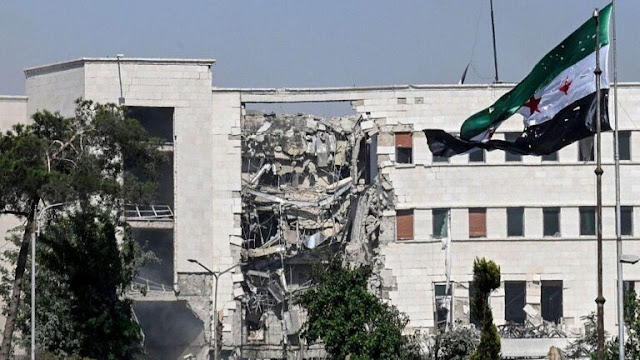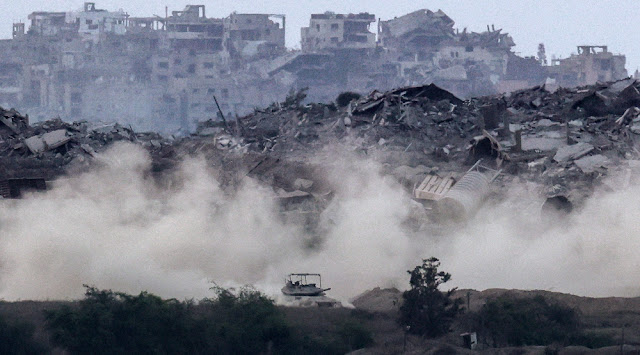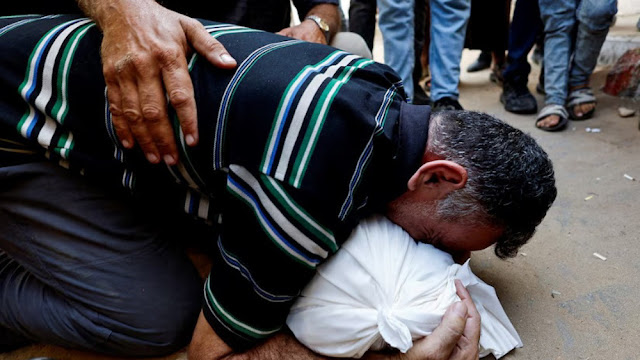On August 26, 2025, Israeli warplanes conducted a series of intense airstrikes on the southern countryside of Damascus, targeting military positions and disrupting access to the region for several hours, according to Syrian officials, state media, and eyewitness accounts. The bombardment, centered around the town of al-Kiswah and the Jabal al-Mani area, resulted in significant casualties and destruction, with reports of Syrian soldiers killed and military vehicles destroyed. The Britain-based Syrian Observatory for Human Rights (SOHR) confirmed the strikes, noting additional Israeli helicopter activity over the nearby Druze village of Deir Ali. The attacks, which continued into Wednesday night, are part of Israel’s escalating campaign against military infrastructure in Syria, raising concerns about violations of the 1974 disengagement agreement and the broader implications for regional stability. This article provides a comprehensive analysis of the airstrikes, their context within the Syrian conflict, the reactions from stakeholders, and the geopolitical ramifications for the Middle East.
The Airstrikes: Details and Immediate Impact
The Israeli airstrikes, which began on August 26, targeted multiple locations in the southern countryside of Damascus, with a particular focus on the town of al-Kiswah, located southwest of the Syrian capital. Residents reported at least eight raids, describing intense bombardment that shook the area and disrupted normal activity. Syria’s state-run Ikhbariya TV confirmed the strikes, specifying that they hit military targets in the vicinity of al-Kiswah and Jabal al-Mani, near the village of al-Harjleh. The SOHR, a UK-based monitoring group with extensive networks in Syria, reported that the strikes were accompanied by Israeli helicopter flights over Deir Ali, a Druze-majority village, indicating a broad and coordinated operation.
A Syrian military source provided further details, revealing that soldiers on patrol in Jabal al-Mani on August 26 discovered monitoring and surveillance devices, likely planted by Israeli forces. While attempting to dismantle the equipment, the troops came under attack from Israeli warplanes, resulting in the deaths of several soldiers, injuries to others, and the destruction of military vehicles. This incident underscores the precision and intensity of Israel’s operations, which appear to target not only infrastructure but also personnel engaged in counter-intelligence efforts.
In a separate strike on Tuesday, August 25, state media reported that six people were killed, though it was unclear whether they were civilians or military personnel. Israeli drones and fighter jets maintained a heavy presence in the area, blocking access to the targeted sites until late Wednesday. This prolonged restriction hindered rescue and recovery efforts, with Syrian forces only able to retrieve the bodies of those killed and destroy some of the surveillance equipment after the blockade was lifted. Fresh airstrikes were reported on Wednesday night, accompanied by ongoing reconnaissance activity, suggesting that Israel’s campaign in the region is far from over.
The exact death toll from the latest strikes remains uncertain, as conflicting reports and restricted access have complicated assessments. The SOHR estimated a higher casualty count than official Syrian sources, reflecting the challenges of verifying information in a conflict zone. The physical and psychological impact on residents was significant, with reports of fear and disruption in al-Kiswah and surrounding areas.
Context: Israel’s Campaign in Syria
Israel’s airstrikes in southern Damascus are part of a broader and intensifying campaign targeting military infrastructure in Syria, particularly assets associated with Iran and its allied militias, such as Hezbollah. Since the onset of the Syrian Civil War in 2011, Israel has conducted hundreds of airstrikes in Syria, primarily aimed at preventing the transfer of advanced weapons to Hezbollah and curbing Iran’s military presence near its borders. The strikes on August 26–27, 2025, represent an escalation in both frequency and scope, with Israel expanding its operations near the occupied Golan Heights, a strategically sensitive area.
The Golan Heights, annexed by Israel in 1981 but claimed by Syria, has been a flashpoint in Israel-Syria relations since the 1967 Six-Day War. The 1974 disengagement agreement, brokered after the Yom Kippur War, established a demilitarized buffer zone monitored by the United Nations Disengagement Observer Force (UNDOF). Syrian officials argue that Israel’s recent actions, including the airstrikes and alleged surveillance activities, violate this agreement by encroaching on Syrian territory and undermining the ceasefire framework. The discovery of monitoring devices in Jabal al-Mani suggests an expansion of Israeli intelligence operations, further escalating tensions.
Israel’s stated rationale for the strikes is to counter security threats, particularly from Iran-backed forces operating in Syria. The Syrian government, led by President Bashar al-Assad, has relied heavily on Iranian and Hezbollah support to maintain power during the civil war, creating a complex web of alliances that Israel views as a direct threat. The targeting of military positions in al-Kiswah and Jabal al-Mani, areas known to host Syrian and Iranian forces, aligns with Israel’s strategy of disrupting these networks. The use of surveillance equipment indicates a proactive approach to monitoring potential threats, though it has provoked accusations of sovereignty violations from Damascus.
Syrian and Regional Reactions
The airstrikes have elicited strong reactions from Syrian authorities and regional stakeholders:
Syrian Government:
Syrian officials condemned the attacks as a “flagrant violation” of the 1974 disengagement agreement and an assault on Syrian sovereignty. The military source’s account of soldiers being targeted while dismantling surveillance devices underscores Damascus’s narrative of Israel as an aggressor undermining Syria’s territorial integrity. State media framed the strikes as part of a broader pattern of Israeli aggression, accusing Tel Aviv of exploiting Syria’s weakened state amid its ongoing conflict.
The Syrian government’s ability to respond militarily is limited, given its reliance on Russian and Iranian support and the devastation of its armed forces after 14 years of civil war. However, diplomatic protests are likely to be lodged with the United Nations, though past complaints have yielded little action.
Local Residents:
Residents of al-Kiswah and surrounding areas expressed fear and frustration, with many reporting sleepless nights due to the intensity of the raids. The prolonged blockade by Israeli drones and jets disrupted daily life, preventing access to affected areas and delaying recovery efforts. The Druze community in Deir Ali, already wary of regional conflicts, voiced concerns about being caught in the crossfire.
Regional Actors:
Iran, a key ally of Syria, is likely to condemn the strikes, given its military presence in the targeted areas. The deaths of Syrian soldiers could also prompt Hezbollah to issue statements of solidarity, though direct retaliation is uncertain given the group’s commitments in Lebanon.
Russia, another major ally of the Assad government, has historically balanced its support for Syria with pragmatic relations with Israel. Moscow may issue a measured condemnation while avoiding escalation, as it seeks to maintain influence in the region.
Arab states, particularly those normalizing relations with Israel under the Abraham Accords (e.g., UAE, Bahrain), may remain silent or issue vague calls for restraint, reflecting their delicate balancing act between regional alliances and domestic sentiment.
International Observers:
The SOHR’s detailed reporting highlights the role of independent monitors in documenting the conflict, though its estimates often differ from official accounts. The United Nations, through UNDOF, may investigate claims of violations in the Golan Heights area, but its ability to enforce the 1974 agreement is limited.
Geopolitical Implications
The airstrikes have significant implications for the Middle East and beyond:
Israel-Syria Relations:
The intensification of Israeli strikes signals a shift toward a more aggressive posture, likely driven by concerns about Iran’s entrenchment in Syria and the potential for Hezbollah to acquire advanced weapons. The violation of the 1974 agreement could further erode trust, making diplomatic engagement between Israel and Syria even more challenging.
Iran’s Role:
The targeting of areas associated with Iranian forces underscores Israel’s determination to counter Tehran’s influence. This could lead to retaliatory actions by Iran or its proxies, escalating the shadow war between the two nations. The discovery of surveillance devices suggests that Israel is also intensifying intelligence operations, potentially provoking a response from Iran.
Golan Heights Tensions:
The strikes near the Golan Heights highlight the area’s strategic importance and the fragility of the 1974 agreement. Israel’s expansion of control in the buffer zone could prompt international scrutiny, particularly from the UN, though enforcement remains a challenge.
Regional Stability:
The airstrikes occur against the backdrop of a volatile Middle East, with ongoing conflicts in Gaza, Lebanon, and Yemen. Israel’s actions risk further destabilizing Syria, where the civil war has left the country fragmented and vulnerable. A broader escalation involving Iran or Hezbollah could have ripple effects across the region.
International Order:
Syria’s accusations of sovereignty violations may resonate with countries critical of Israel’s actions, particularly in the Global South. However, Israel’s alignment with the United States and its strategic importance in the region may limit international repercussions.
Challenges and Opportunities
The airstrikes present both challenges and opportunities for the involved parties:
Challenges:
Escalation Risk: The intensification of Israeli strikes could provoke retaliation from Syria, Iran, or Hezbollah, leading to a broader conflict. The presence of Russian forces in Syria adds another layer of complexity, as Moscow seeks to avoid direct confrontation with Israel.
Humanitarian Impact: The strikes exacerbate Syria’s humanitarian crisis, with over 13 million people already displaced and in need of aid. Civilian casualties or disruptions in affected areas could worsen conditions.
Diplomatic Stalemate: Syria’s limited capacity to respond militarily and the lack of effective international mechanisms to enforce the 1974 agreement could perpetuate a cycle of violations and protests.
Opportunities:
Diplomatic Engagement: The international attention on the strikes could prompt renewed efforts to mediate tensions, potentially through UN channels or backchannel talks involving Russia.
Regional Dialogue: The presence of Arab states normalizing ties with Israel offers a potential avenue for de-escalation, though domestic pressures may limit their involvement.
Security Enhancements: For Israel, the strikes and surveillance operations strengthen its ability to monitor and counter threats, potentially deterring Iran and Hezbollah from expanding their presence.
Conclusion
The Israeli airstrikes on southern Damascus on August 26–27, 2025, represent a significant escalation in Israel’s campaign against military targets in Syria, with profound implications for regional stability. Targeting areas like al-Kiswah and Jabal al-Mani, the strikes resulted in casualties, destroyed infrastructure, and raised concerns about violations of the 1974 disengagement agreement. Syria’s accusations, coupled with the discovery of Israeli surveillance devices, highlight the ongoing tensions driven by Iran’s presence and Israel’s security concerns.
The strikes occur in a complex geopolitical context, with Syria weakened by civil war, Iran and Hezbollah entrenched in the region, and Israel seeking to maintain strategic dominance. The international community, including the UN and regional powers, faces the challenge of addressing these violations without triggering a broader conflict. For Syria, the strikes underscore its vulnerability, while for Israel, they reflect a calculated risk to counter perceived threats.
As the region navigates this latest flare-up, the need for diplomatic engagement and restraint is paramount. The airstrikes, while achieving tactical objectives for Israel, risk further destabilizing an already fragile Syria, with potential consequences for the broader Middle East. The world will watch closely as stakeholders respond to this escalation, seeking a path toward de-escalation and stability.






